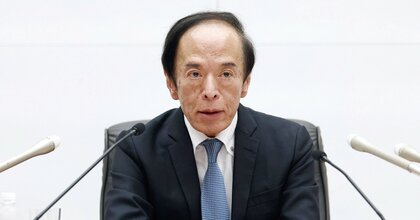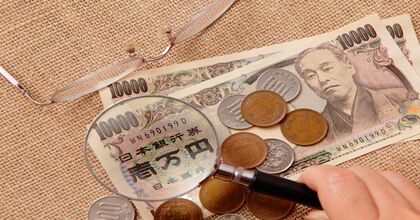Originally published in Japanese on March 16, 2023
Forward guidance is key
The BOJ policy statement clarifies its commitment to achieving and sustaining a 2% target for price stability before outlining the following two types of forward guidance, both of which impact long-term interest rates.
The first is to continue the policy of "quantitative and qualitative monetary easing with yield curve control (YCC)" until the price stability target is achieved and stably sustained. The second is to maintain an expansionary policy regarding the monetary base until the actual inflation rate (excluding fresh food) surpasses a stable 2% year-on-year increase.
In other words, fulfilling the conditions outlined in these two types of forward guidance suggests the possibility of modifying the monetary easing described therein. The former references YCC, aiming to flatten the yield curve by pushing down short- and long-term interest rates. While maintaining a policy rate of minus 0.1% for short-term interest rates (namely, the policy rate related to part of the BOJ’s current account balances), it explicitly states the intention to purchase as many long-term government bonds as necessary to keep long-term interest rates (10-year government bond yields) around 0% without setting an upper limit.
Meanwhile, in actual operations, a limited band is set on the 10-year interest rate, allowing for slight fluctuations within that range, with the upper limit targeted at around 1.0%. This target suggests that exceeding 1% is permissible to some extent.
The monetary base consists of the total of banknote issuance and the BOJ’s total current account balances. The BOJ is committed to expanding the monetary base by measures like purchasing government bonds and supplying funds to banks, thus expanding its balance sheet. Currently, continued purchases of government bonds contribute the most to the expansion of the monetary base.
As a result of continuing to purchase government bonds to keep the 10-year interest rate level below approximately 1% and to expand the monetary base, the BOJ’s holdings of government bonds have increased to around 54% of the outstanding government bond balance.
Watching inflation
Both types of forward guidance are deeply related to the stable realization of 2% inflation. The first is related to the outlook of achieving 2% stably, while the latter emphasizes the actual core inflation rate (excluding fresh food) exceeding 2% stably. The former relates to the overall inflation rate, and the latter relates to the core inflation rate.
If the BOJ abolishes YCC by ending the negative interest rates and raises them to 0% (to be precise, changing from the current three-tier structure of minus 0.1%, 0%, and 0.1% to a two-tier structure of 0% and +0.1%), and removing the 0% target for 10-year yields, it should explain that it has met the conditions regarding inflation as it pertains to the first forward guidance.
The latest inflation rate is 2.2% as of January (the core inflation rate is 2%). In fact, when breaking down this 2.2% inflation rate by major items, it becomes clear that Japan's inflation rate is fundamentally "cost-push." The BOJ tends to focus only on fresh food prices, which are easily influenced by weather conditions, but it should also look into "other food," which comprises almost all imported items and accounts for the majority of food consumption.
In fact, these food items, in total, account for about 70% of inflation. Foods account for nearly 30% of consumer spending, so the fact that food prices have risen by about 6% has increased the burden on people's lives. This is why price measures continue to be the top economic policy demanded by the government in public opinion polls. Due to the soaring food prices, consumers' real consumption expenditure on food continues to decline. Not only food but real consumption overall has also been sluggish in the face of price hikes and has not yet recovered to the level of early 2019 before the COVID-19 crisis. Consumer thriftiness is evident.
If the food inflation rate were 0%, Japan's inflation rate for January this year would have been only 0.6%. Food-based cost-push inflation is clear in Japan. Without this, the current inflation rate of above 2% would not be possible.
Other inflationary factors include soaring hotel accommodation fees, fees for overseas package trips, and mobile phone call charges. The first two items are related to the yen's depreciation and are unrelated to domestic demand. Mobile phones have become a necessity item for the people, and thus it is difficult to believe that their charges can be increased by 10% annually going forward as they are now.
The inflation rate has begun to exceed 2% since April 2022 but has been declining from its peak of 4.3%. The food inflation rate continues to decrease gradually and is expected to clearly decline relatively strongly after October of this year, pushing down the inflation rate. It is uncertain whether the other items mentioned above will continue to push up inflation if the yen begins to appreciate against the US dollar.
Currently, the government is providing subsidies for electricity and gas prices to suppress price increases. If these subsidies are reduced or eliminated, this may temporarily push up the inflation rate. However, on average, the inflation rate is expected to continue to decline gradually and is likely to fall below 2% eventually. It seems quite challenging for the BOJ to assess the stable realization of the 2% target in any case.
Rush to change
The BOJ emphasizes achieving a virtuous cycle of wage and price increases. However, despite reaching a successful wage increase of 3.6% in last year's spring labor negotiations between large companies and labor unions, the actual wage increase from April to December last year, including small and medium-sized enterprises, was only 1.3%. This is even lower than the 1.9% increase during the same period in 2022. In real terms, the situation is even worse, with a decrease of 2.3% compared to the previous year's decrease of 1.6%. Thus, just by looking at the results of the spring negotiations centered around large corporations, it has become difficult to understand the actual wage situation for households.
Amidst the sharp rise in prices, where wages are declining in real terms and real consumption is stagnating or declining, the public is unlikely to perceive a virtuous cycle of wage and price increases.
In contrast, in the United States, the rate of wage increases is around 4.4%, with a real increase of over 1%, and real consumption continues to rise. In economies where real wages are rising and, despite inflation, real consumption persists, a virtuous cycle of wage and price increases can be said to exist.
In recent months, the BOJ has been sending out signals that the virtuous cycle of price and wage increases is occurring and that the stable realization of 2% is foreseeable. The BOJ is seemingly rushing to abolish YCC. Although it may depend on political factors, market participants see a change in March or April as almost certain.
One of the reasons behind the BOJ’s rush might be associated with the concerns about the excessive depreciation of the yen and associated inflation. The gap in interest rates between the United States and Japan and the differing policy stances of the Federal Reserve and the BOJ have been the driving forces behind the significant depreciation of the yen.
For foreigners, tourism to Japan becomes substantially cheaper, and even if prices increase, it does not have much impact. Real estate and stocks also appear very cheap to them, and many foreign investors might believe that such investments may certainly generate profits when the yen strengthens later. However, the significant depreciation of the yen is leading to price hikes, and with wages not rising sufficiently and expectations for increases not high among the Japanese public, there might be a desire to expedite policy changes.
Additionally, the BOJ might be considering potential influences from the United States. If the Federal Reserve shifts to rate cuts at around June this year, or if the actions and statements of Donald Trump, who is now likely to become the Republican presidential candidate, gain more influence, there is a risk of significant movements in interest rates, stock prices, and exchange rates in the United States and Japan. Hence, there might be a desire to implement policy changes quickly now.
Furthermore, the BOJ is well aware of the side effects of the negative interest rates and has made various efforts to mitigate these side effects since their adoption in 2016. The central bank likely strongly desires to seize this opportunity to abolish the negative interest rates, since such a move may not be feasible next time.
Many market participants anticipate that if the wage increase in this year’s spring negotiations is higher than last year's (3.6%), the BOJ will implement the policy changes. The preliminary results released on March 13, which mainly reflect largest companies, appeared better than those of last year. If the BOJ is to expedite these changes, therefore, it might be better to do so in March without waiting. Considering the weakness of the Japanese economy, short-term interest rates are likely only to see a slight increase.
The next challenge lies in handling the upper limit of long-term yields, which is currently set at around 1%, and the other forward guidance. These aspects significantly affect the policy of purchasing government bonds. In terms of long-term yields, these factors – that is, the negative interest rates and the 10-year yield target of 0% – are actually more important than abolishing YCC. To avoid causing significant yield fluctuations, it would be advisable to maintain the 1% upper limit. Additionally, regarding the issue of whether to retain or abolish the second piece of forward guidance, it will be necessary for the immediate future to adopt a policy that flexibly purchases new bonds while maintaining the balance of government bond holdings.
A medium-term challenge will be dealing with the 2% price stability target. Flexibility in the 2% target may be necessary. For example, instead of a fixed 2% figure, setting a range, such as 1% to 3%, and revising it every three years would make it possible to change policies without contradictions. There might be room for consideration of steps like this in the future.
Sayuri Shirai is a professor at the Faculty of Policy Management, Keio University, and a former Bank of Japan board member (2011-2016). She holds a Ph.D. in economics from Columbia University. The views expressed here are her own.











